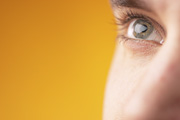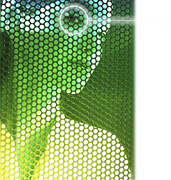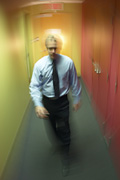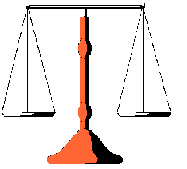Choice Theory Basics
| Site: | learnonline |
| Course: | Working collaboratively |
| Book: | Choice Theory Basics |
| Printed by: | Guest user |
| Date: | Friday, 19 December 2025, 11:58 PM |
Description
This learning object contains a synopsis and learning activities drawn from William Glasser's Choice theory. It can assist individuals appreciate about personal responsibility for change as a component of effective collaboration.
Choice theory
This learning object contains a synopsis and learning activities drawn from William Glasser's Choice theory. It can assist individuals appreciate about personal responsibility for change as a component of effective collaboration.
 It has been based on work originally prepared by Jonathon Erwin.
It has been based on work originally prepared by Jonathon Erwin.
To use this learning object, work your way through the 5 sections of Choice theory in the folder marker "The theory", attempting the learning activities associated with each section, either independently, or with members of your group.
The 6 activities are also available separately in the folder labelled as "Activities".
Introduction
Choice theory is an explanation of human behaviour developed by Dr William Glasser. Dr Glasser explains that all we do all our lives is behave, and is that we choose our behaviour in an attempt to meet one or more of the five basic human needs that are built into our genetic structure.
The five major components of choice theory are:
- The five basic human needs
- The quality world
- The perceived world
- The comparing place
- Total behaviour
Next
The five basic human needs
According to Dr Glasser, all behaviour is purposeful. It is our best attempt at the time, given our current knowledge and skills, to meet one or more of our basic human needs, needs which evolved over time and have become part of our genetic structure. These needs are the general motivation for everything we do.
The five basic needs are:
- Survival
- Belonging
- Power
- Freedom
- Fun
Characteristics of the five basic human needs:
- Universal
- Innate
- Overlapping
- Satisfied from moment to moment
- Conflict with others needs
Activities
You can download these activities and use them within your groups
Next
The perceived world and the perceptual system
Dr Glasser explains that the only way we experience the real world is through our perceptual system.  Information about the real world comes to us first through our sensory system: our eyes, ears, nose, mouth and skin. Next, these sensations pass through our perceptual system, beginning with what Glasser calls our total knowledge filter, which represents everything we know or have experienced.
Information about the real world comes to us first through our sensory system: our eyes, ears, nose, mouth and skin. Next, these sensations pass through our perceptual system, beginning with what Glasser calls our total knowledge filter, which represents everything we know or have experienced.
When information passes through our knowledge filter, one of three things happens:
- we decide that the information is not meaningful to us and the perception stops there
- we do you not immediately recognise the information, but believe it may be meaningful to us so we have some incentive to gain more information, or
- the information is meaningful to us and therefore passes through the next filter, the valuing filter.
 When information passes through the valuing filter, we place one of three values on it. If it is something we have learned is the needs-satisfying, we place a positive value on it. If it is something we have learned hinders our ability to meet our needs, we place a negative value on it. If it neither helps us nor hinders us in meeting our needs, we may place a little or no value on it; it remains neutral.
When information passes through the valuing filter, we place one of three values on it. If it is something we have learned is the needs-satisfying, we place a positive value on it. If it is something we have learned hinders our ability to meet our needs, we place a negative value on it. If it neither helps us nor hinders us in meeting our needs, we may place a little or no value on it; it remains neutral.
Because we all come to every situation with different knowledge and experience, and therefore different values, our perceptions of the real world are different. Thus, we don't all live in the same "real world." We live our lives in our perceived worlds.
By "values" Dr Glasser means that which is important to us, not necessarily being limited to moral or ethical values.
Our perceived worlds are, for each of us, our reality.
Because they are made up of perceptions, our perceived worlds are:
- Highly subjective: based on one's culture, education, experience, gender, age, etc.
- Unique
- Subject to constant change (new information, new experiences = new perceptions)
- Frequently inaccurate
Often our perceptions are chosen. we can frequently choose to perceive people, places, and situations in a number of ways.  For example, in driving to work, I might choose to think of the person who just pulled out in front of me as an inconsiderate jerk who is intentionally ruining my morning and feel all the stress that that perception carries with it. Or I could think of the person as someone like myself who just made a mistake in judgment because he/she is in such a hurry. Then I could try to relax so as not to do the same. In choosing our perceptions, it might be a good idea to ask ourselves which perception is better for us to hold.
For example, in driving to work, I might choose to think of the person who just pulled out in front of me as an inconsiderate jerk who is intentionally ruining my morning and feel all the stress that that perception carries with it. Or I could think of the person as someone like myself who just made a mistake in judgment because he/she is in such a hurry. Then I could try to relax so as not to do the same. In choosing our perceptions, it might be a good idea to ask ourselves which perception is better for us to hold.
Activities
You can download this activity to use with your group members
Next
The quality world
 An important part of our perceived world is the quality world. Dr Glasser describes the quality world as a "personal picture album" of all the people, things, ideas, and ideals that we have discovered increase the quality of our lives.
An important part of our perceived world is the quality world. Dr Glasser describes the quality world as a "personal picture album" of all the people, things, ideas, and ideals that we have discovered increase the quality of our lives.
While the basic human needs are the general motivation for all human behaviour, the quality world is the specific motivation. The basic human needs describe what we need, the quality world pictures detail how we meet those needs. The basic human needs are universal; our individual quality worlds are unique.
The pictures in our quality world:
- Meet one or more of our basic human needs
- Are changing and changeable
- Are unique
- Often conflict with each other
- Vary in levels of intensity
- Vary in levels of attainability
Activities
You can download this activity and use it individually or with your group members
Next
The comparing place
The comparing place describes our process that happens continuously in the brain.
It is happening as you this.
What you just experienced as you read the last sentence will help you understand the concept of the comparing place.
As we experienced life, we are constantly comparing what we want (our quality world pictures) with what we've got (our perceived world). when the two match fairly well, we feel good. When there is a mismatch, as there probably was when you read the sentence above, you feel a degree of frustration depending on how important the quality world picture is for you. That frustration signal, as Glasser terms it, is felt as an urge to behave in a way that will help us get more of what we want.
 As you read the sentence above, you probably felt a slight frustration signal when you read "It is happening as you this." What you probably want (your quality world picture) when you read something is for it to make sense. Since the word "read" is missing from the sentence, you may have experienced a frustration signal which may have urged you to go back and reread the sentence. Once you did that, you probably realised a word was missing and your brain supplied a word that would make sense in that sentence. once That you did that, the frustration signal disappeared.
As you read the sentence above, you probably felt a slight frustration signal when you read "It is happening as you this." What you probably want (your quality world picture) when you read something is for it to make sense. Since the word "read" is missing from the sentence, you may have experienced a frustration signal which may have urged you to go back and reread the sentence. Once you did that, you probably realised a word was missing and your brain supplied a word that would make sense in that sentence. once That you did that, the frustration signal disappeared.
 Glasser likens the comparing place to a set of scales. When your scales are in balance, when what you want is what you have, you continue to do what you've been doing. When your scales get out of balance, you feel the frustration signal, the urge to behave.
Glasser likens the comparing place to a set of scales. When your scales are in balance, when what you want is what you have, you continue to do what you've been doing. When your scales get out of balance, you feel the frustration signal, the urge to behave.
Activities
You can download this activity and use it individually or with your group members.
Next
Total behaviour
The behavioural system
One of Dr Glasser's major premises is that "All behaviour is purposeful". That is, ALL of our behaviour is our best attempt at the time, given the resources at our disposal (knowledge, skills, etc.) to meet our needs. Another way of putting it is all of our behaviour is an attempt at making the real world conform to the pictures in our quality world.
Most of the time we choose behaviours that Glasser terms organised behaviours. Used behaviours are ones that we are familiar with, that we have used before. For example, when I want to meet my need for fun, one of my organised behaviours is to go out to dinner with my partner and another couple. That is a behaviour that has worked firmly in the past.
If we do not have an organised behaviour immediately available, or organise behaviours that have worked in the past are not working in the current situation, we are capable of figuring out new behaviours. Glasser terms this process reorganising; this is our creativity, which is always going on, whether we decide to use it or not.
Total Behaviour
According to Dr Glasser all behaviour is total behaviour, made up of four components:
- Acting
- Thinking
- Feeling
- Physiology
All four components are present all the time, and we name our current behaviour by the most obvious component. Like the wheels of a car, if one wheel changes direction or speed, the others follow.
 For example, if I am jogging, the most obvious component is the acting component. But while I am jogging, I may be thinking a number of things: "What a beautiful day!" or, "I love these new running shoes" or "I wonder if I can make it up this hill." I am also feeling something: exhilaration, possibly, or gladness, or maybe even a little fear at times. Simultaneously, my physiology is pumped up. My heart rates is up, my muscles are working, and I'm sweating. This would be in my total jogging behaviour. All four components are present, but we named the behaviour after the most salient component, acting.
For example, if I am jogging, the most obvious component is the acting component. But while I am jogging, I may be thinking a number of things: "What a beautiful day!" or, "I love these new running shoes" or "I wonder if I can make it up this hill." I am also feeling something: exhilaration, possibly, or gladness, or maybe even a little fear at times. Simultaneously, my physiology is pumped up. My heart rates is up, my muscles are working, and I'm sweating. This would be in my total jogging behaviour. All four components are present, but we named the behaviour after the most salient component, acting.
In contrast, a behaviour named after the feeling component might be being angry. But while I am angry, I may be thinking, "How dare this person treat me this way!" I may be doing something like yelling or pacing. And my physiology would most likely include muscle tension and shallow breathing, among other things.
 A behaviour named after the thinking component is meditating. While I am meditating, my acting behaviour would probably be sitting. My feeling component would be contentment, and my physiology would be slowed down.
A behaviour named after the thinking component is meditating. While I am meditating, my acting behaviour would probably be sitting. My feeling component would be contentment, and my physiology would be slowed down.
Finally, a behaviour named after the physiological component is shivering. While I am shivering, I might be feeling frustrated. I might be thinking, "Why didn't I'd wear a coat?" and I might be doing anything I could think of to get warmer, running in place, cuddling up to my partner, etc.
All four of these components are occurring all the time, and when we change one of the components, the other three change accordingly.
What Can We Control?
According to Glasser, we choose all of our behaviours. The component we have the most control over is our acting. The next most easily controlled component is our thinking. Therefore, if we want to change the way we are feeling emotionally or physically, the most effective thing to do is to change what we are doing. If, because of the situation, we can't change what we are doing, we can change what we are thinking.
 For example, if I have experienced frustration most of the day, I may be feeling angry, my body may be tense, I may be thinking "I hate my job!" and I may be complaining about it to a co-worker. The acting component of my behaviour, complaining, may not be helping me feel better physically or emotionally. So if I changed that component and, say, take a brisk walk, I will most likely change what I'm thinking, which will in turn help me feel better both emotionally and physically.
For example, if I have experienced frustration most of the day, I may be feeling angry, my body may be tense, I may be thinking "I hate my job!" and I may be complaining about it to a co-worker. The acting component of my behaviour, complaining, may not be helping me feel better physically or emotionally. So if I changed that component and, say, take a brisk walk, I will most likely change what I'm thinking, which will in turn help me feel better both emotionally and physically.
Activities
You can download of this activity sheet and use it with your group members
Next
Putting it together
This diagram attempts to pull together the five sections of choice theory. On the left are the 5 basic human needs. The real world is on the right. However what is perceived is only that information that has successfully passed through the knowledge and values filters. What is perceived is compared to the images stored in the individual's quality world. Behavioural choices are made as a a result. Total behaviour includes acting, thinking, feeling and physiology. Some of these components of total behaviour are easier to change than others.
Introduction
To help group members learn the basics of choice theory and how it applies to them, a series of 6 activities have been developed.
The activities are linked to the sections of the theory. Each activity will open in a new window so that it can be printed to be used in a group session.
Section of Choice theory |
Activity |
| The five basic human needs | |
| The perceived world | |
| The quality world | |
| The comparing place | |
| Total behaviour |
Personalising the basic human needs
Download activity as word document
To gain an understanding of how the basic human needs motivate your behaviour, complete the activity below entitled "My Needs Circle."
In each quadrant of the circle, list the people, places, and activities that help you meet each of the psychological needs: love and belonging, power, freedom and fun. You may want to list the same need-fulfilling person, place, or activity more than once. What do you notice about the ways you meet your needs?
My Needs Circle
Your needs profile
Download activity as a word document
Although we share the same basic human needs, we differ in the amount of each need we require. For example, while some people have a high need for social connections, (love and belonging), others are more driven by the need to achieve (power), the need to play (fun), the need for independence (freedom), all the need to be healthy and/or financially secure (survival). Arlin 'Pete' Peterson, a senior faculty member with The William Glasser Institute, developed an activity to help people understand their own needs profile, and determine to what degree they were successful at satisfying their needs. It is called Pete's Pathogram. To complete the pathogram:
- In the "WANT" column for each need, place a "W" in the box corresponding to the strength you believe you hold for that need in relation to the other needs. For example, you may have an "X" in the nine box for Love and Belonging, in the "7" box for Power, in the five box for Freedom, and in the six box for Fun. That, then, would be your needs profile.
- In the "HAVE" column for each need, place a "H" to represent how much of that need you think you are currently getting in your life.
- In the "ENERGY" column, place an "E" to represent the amount of time and energy you are currently expending to satisfy that need.
- What have you learned about your needs and the behaviours you are using to meet your needs? You might wish to discuss this with your group members.
| 10 | ||||||||||||
| 9 | ||||||||||||
| 8 | ||||||||||||
| 7 | ||||||||||||
| 6 | ||||||||||||
| 5 | ||||||||||||
| 4 | ||||||||||||
| 3 | ||||||||||||
| 2 | ||||||||||||
| 1 | ||||||||||||
| W | H | E | W | H | E | W | H | E | W | H | E | |
| Love and
Belonging |
Power |
Freedom |
Fun |
|||||||||
W = Want H = Currently have E = Time and energy
Personalising the perceived world
With a partner or small group, discuss the following:
- Your perceptions concerning the following:
- a great way to spend a Friday night
- one favourite food and one food you try to avoid
- a favourite song from your high school years
- a famous person (dead or alive) that you would like to meet.
- A perception that you've held that changed. How and why did it change?
- A perception you currently hold that you might want to change.
- Based on your discussion, what conclusions can you make about the perceived world?
My quality world
To gain a clearer understanding of your personal quality of world, discuss with a partner or small group a few of the following:
-
Who are the most important people in your life?
-
What are your most deeply held values?
-
If you become the person you would ideally like to be, what traits or characteristics would you have?
-
What it is an accomplishment that you are really proud of?
-
If you could have the perfect job, what would that be?
-
If you were independently wealthy, what would you do with your time?
-
Describe a time in your life you would call a peak experience.
-
What does it mean to be a friend?
-
What brings a significant amount of meaning to your life?
-
What, for you, makes a house a home?
What have you learned about your quality world?
What have you learned about quality world pictures in general?
The comparing place
To gain a greater understanding of the comparing place, discuss the following with a partner or in a small group:
1. Discuss a time when there was a significant difference between a want (quality world picture) and a "got" (the perceived world).
what was the want?
what was the "got"?
what did you feel?
what did you do?
2. What are some of your physical signs that tell you that your scales are out of balance?

Total behaviour activities
With a partner or small group, try the following activities and discuss.
1 Ask your partner to close their eyes and try their best to follow your instructions to:
- think red
- think blue
- stop thinking blue
- feel angry
- feel sad
- raise your heart rate
- lower your cholesterol
- sweat
- raise your hand
- touch your nose
- open your eyes
2. Next, discuss which directions were the easiest to follow. This should underscore the point that the easiest component of total behaviour to control is the acting component, followed by thinking, feeling, and physiology in that order.
3. In this next activity, identify the component of total behaviour listed and discussed what the other components would be for you.
Example: eating sushi
- eating sushi is the acting component of total behaviour
- other components (for me) are
- thinking: "yuck this tastes like raw fish"
- feeling: embarrassed because liking sushi is supposed to be cool
- physiology: gag reflex
Now you try doing the same for the following:
- daydreaming
- skiing
- breathing deeply
- being sad
- reading a novel
What have you learned about total behaviour?